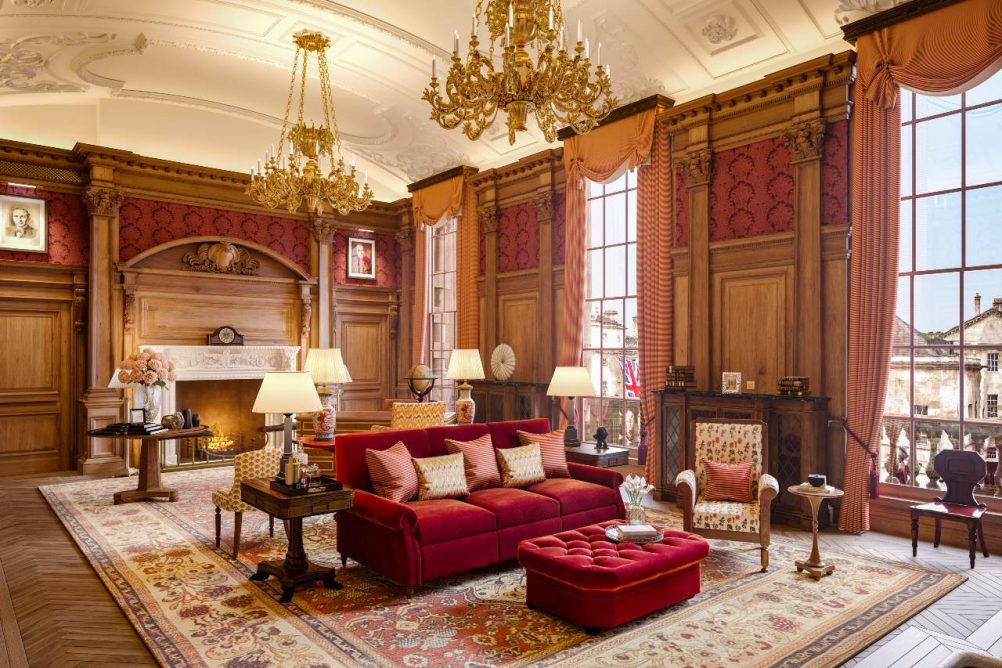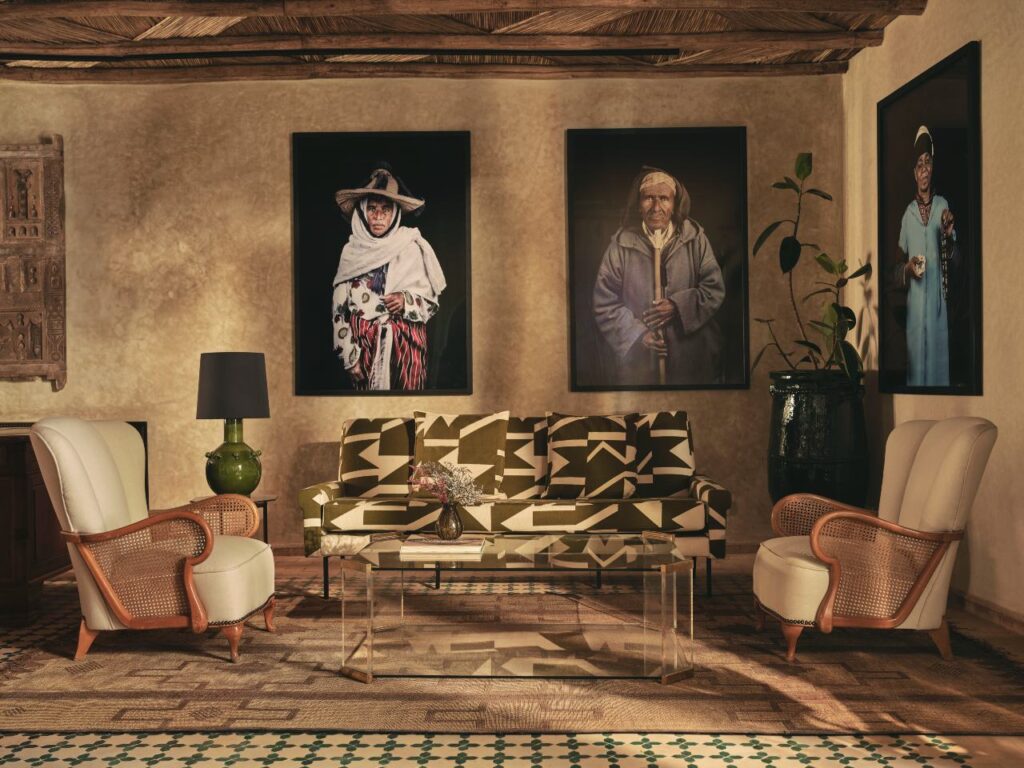Discover London’s most memorable stay
Sumptuous interiors, impeccable service and history around every corner make Raffles London at the OWO a one-of-a-kind.
Words by Ute Junker
Photos supplied
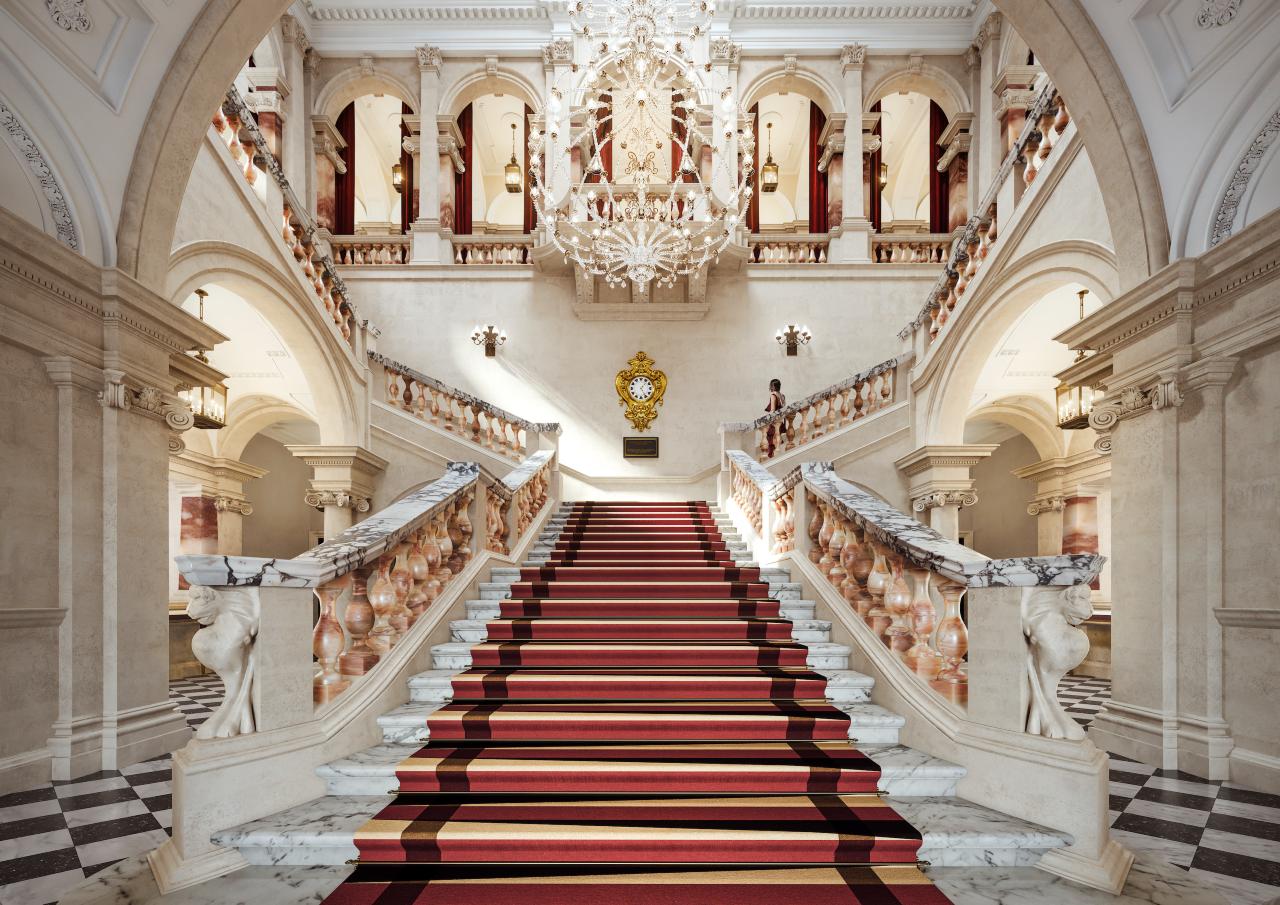
Winston Churchill is not looking impressed. His bust on the mantelpiece gazes down critically at me as I sit at the expansive desk that was once his. In Churchill’s day, this building was the War Office, a place where life and death decisions were made. Today it is London’s newest luxury hotel, Raffles London at the OWO, and I am sitting in the hotel’s top suite, where Churchill’s desk has pride of place. Unlike Churchill, I have no vital decisions to deal with during my stay; the most pressing choice I have to make is to decide what time I should head down for dinner.
Nonetheless, I feel that Churchill, a man known to appreciate the finer things in life, would approve of the hotel in general and the Haldane Suite, where I am staying, in particular. Named for the Secretary of State for War who reformed the British Army early in the 20th century, the suite is nothing short of jaw-dropping.
Stretching over 250 square metres, with a dressing room, a green marble bathroom, a kitchenette and this sitting room as well as a sprawling bedroom, its soaring carved plaster ceilings, oak panelling, elegant sofas and three separate, equally ornate, fireplaces (two in the sitting room, another in the bedroom) conjure up the glory days of the past.
London may be in the middle of a luxury hotel boom, with chic new openings from the likes of Mandarin Oriental in Mayfair and The Peninsula at Hyde Park Corner, but this Raffles stands alone. Sitting proudly on Whitehall, directly opposite the Horse Guards parade and a short stroll to St James Park, Trafalgar Square and the Thames, this building is more than a hotel. It is a British landmark, a place where everyone from Lawrence of Arabia to Ian Fleming, creator of James Bond, strolled the corridors.
And what corridors they are. The building, which opened in 1906, was designed as a statement of power, constructed with 26 million bricks, hundreds of thousands of floor mosaics and four km of corridors so wide that, during wartime, the Boy Scouts conscripted for messenger duty would ride their bicycles along the corridors when delivering urgent messages from one office to the next.
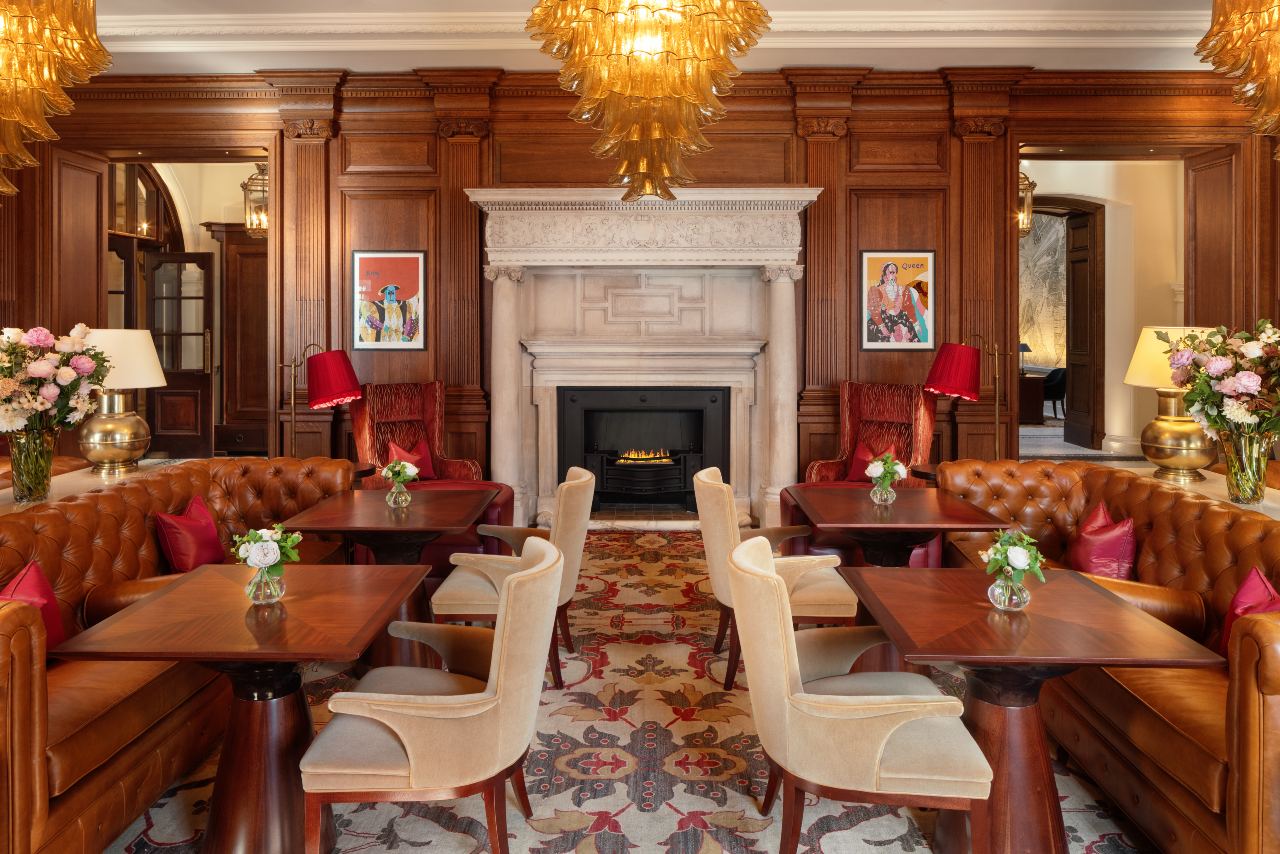
The building’s recent renovation was an equally impressive undertaking. The hotel’s owners, the Hinduja family, invested eight years and one billion pounds to recapture the building’s beauty. The restored oak panelling is set off with swathes of rich red fabric that echo the red uniforms of the Horse Guards who parade across the road. Other scene-stealing features include a stunning two-storey chandelier suspended above the magnificent marble staircase that greets you when you enter the building.
Raffles London at the OWO is designed for those with deep pockets – rates start at GBP1100 for standard rooms, with suites starting at GBP18,000 a night – but you don’t have to check in to soak up the atmosphere. The hotel has a rich roster of restaurants including several by triple-Michelin-starred chef Mauro Colegreco, whose passion for the best produce has seen his Cote d’Azur restaurant, Mirazur, previously crowned World’s Best Restaurant.
Make a booking at Mauro by Mauro Colagreco – an intimate space where you can enjoy an exquisite degustation dinner constructed largely around plant-based foods, with a grand finale that includes a visit from the old-school cheese trolley – or opt for a more relaxed meal at the pretty-as-a-picture Saison, also helmed by Colagrco.
Other restaurants include the French brasserie, La Perouse, the Italian Paper Moon, and the eagerly-anticipated rooftop Japanese restaurant helmed by another Michelin-starred chef Endo Kazutoshi.
Alternatively you might enjoy a coffee in The Drawing Room or pull up a pew in The Guards Bar. Creative cocktails are a Raffles tradition – the Singapore Sling was invented at the original Singapore property – and the bar team has created an inspired list. Naturally there is a London Sling – flavoured with strawberry and lime leaf – but the Singapore Sling has also provided inspiration for the rest of the list, which is based around the cocktail’s key flavours. Each flavour is showcased in with a pair of cocktails, one celebrating British ingredients, the other featuring more global tastes.
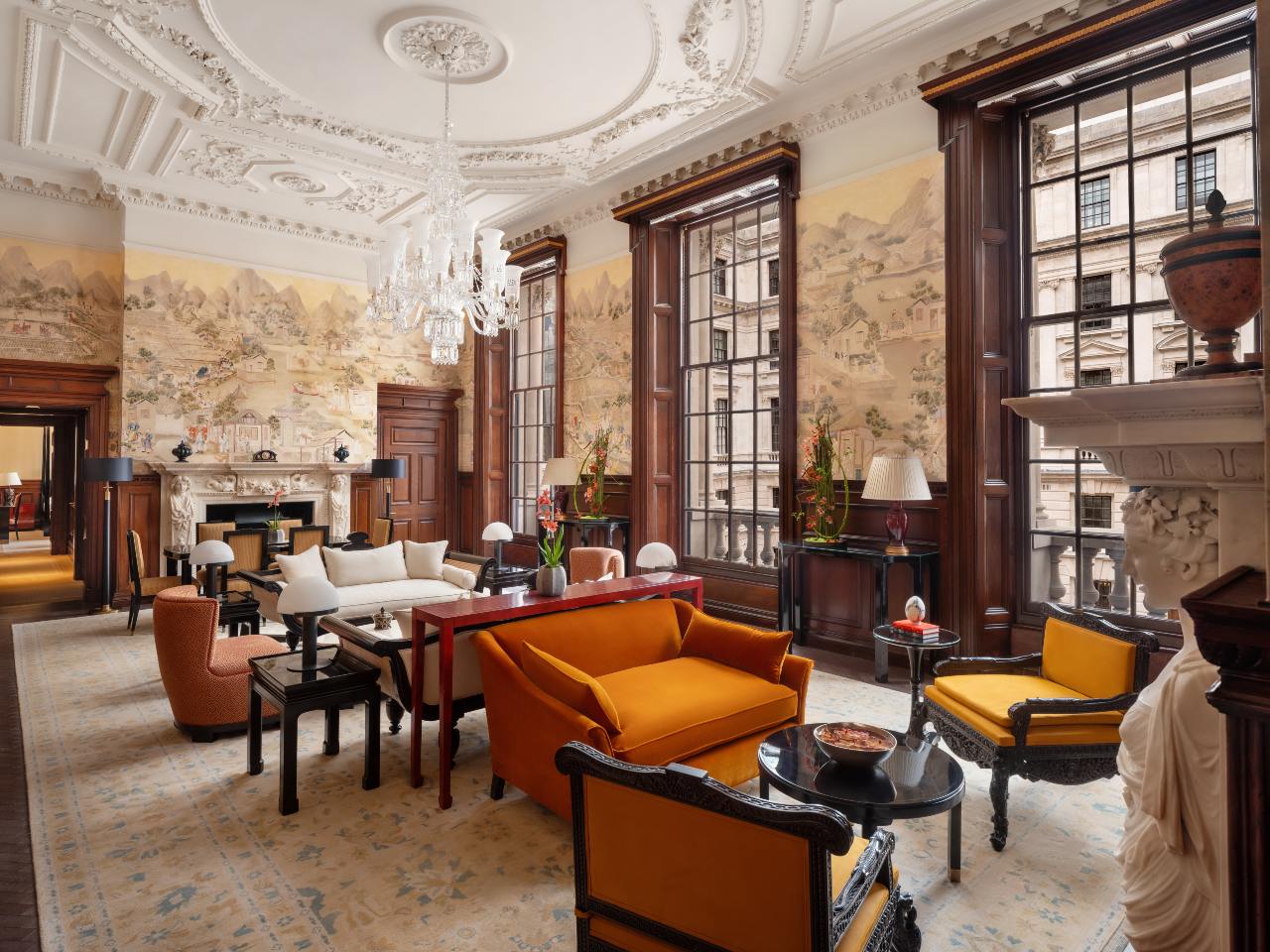
The results are inspired. If you like juniper, try the English Juniper cocktail which includes flavours of rose, lavender, grapefruit and rosemary. My personal pick is the stunning Tropical English, with its surprising blend of Glenfiddich, pear and fig leaf flavours.
There are plenty of other indulgences to discover in the hotel – head downstairs, for instance, and you will find a glamorous indoor pool and a sumptuous Guerlain spa, where supercharged facials will leave you looking years younger – but ultimately, any visit to Raffles London at the OWO is about immersing yourself in this remarkable building. Guests can enjoy daily historic tours, while 10 scheduled tours a year will be open to the general public.
Many will come to hear tales of Winston Churchill – who had three separate tenures in the building, as First Lord of the Admiralty, Secretary of State for War and, during World War Two, as prime minister – and will be thrilled to be able to stand at the exact spot where he would share the latest news from the front with the staff.
For me, however, it is the tales of the daring spies whose hazardous work helped secure victory that are the most intriguing, including the story of the woman Churchill described as his favourite spy.
Christina Granville, born Krystyna Skarbek, was a Polish aristocrat who offered her services to the British after her country was invaded. Famous for her cool head, she operated in in various parts of Nazi-occupied Europe including Poland and France, and had a knack for getting herself out of sticky situations. In 1941, when she and a fellow spy were being questioned by the Gestapo in Hungary, she feigned symptoms of tuberculosis by biting her tongue until it bled, leading both of them to be released.
That wasn’t the last time Granville almost got caught but she survived the war, although she later met an untimely death at the hands of a former colleague who was infatuated with her. Now she is commemorated with her own suite at Raffles. One suspects the high-born Granville would find that a fitting tribute.
Visit: theowo.london
